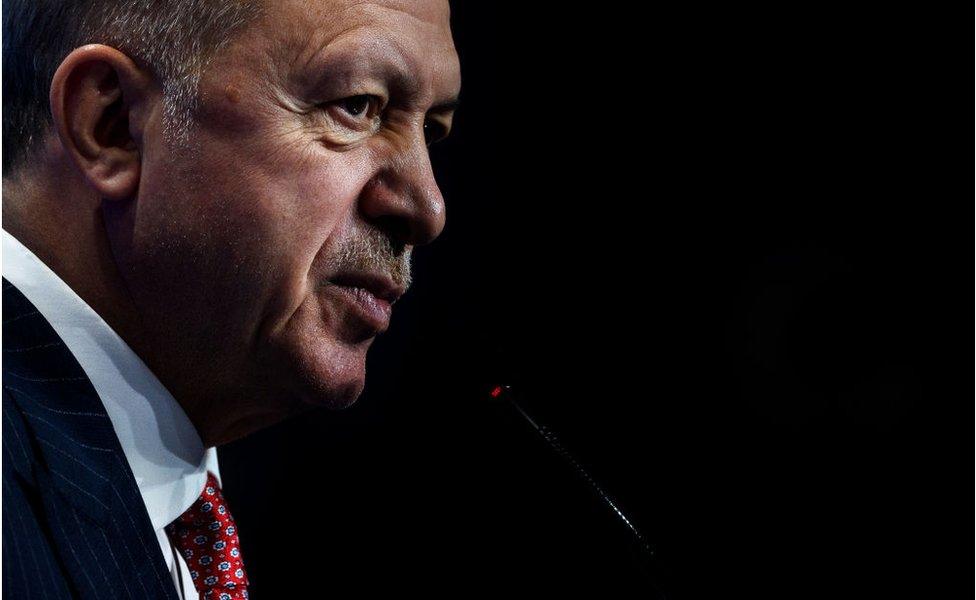Turkish lira in comeback after new plan unveiled
- Published

President Tayyip Erdogan built his reputation on strengthening Turkey's economy
The Turkish lira has seen a second day of dramatic gains after President Recep Tayyip Erdogan unveiled a new plan aimed at strengthening the currency.
In Tuesday trading, it rose as much as 15%, after soaring 25% on Monday.
The gains came after Mr Erdogan pledged to compensate savers for inflation that has eroded the value of bank deposits held in lira.
The currency had fallen to record lows as the rise in the country's cost of living hit 21.7%.
But at one point on Tuesday, it firmed to just over 11 to the dollar before falling back slightly.
Despite the price rises, Mr Erdogan has pushed the central bank to keep cutting interest rates.
Last week, it reduced borrowing costs to from 15% to 14% on Thursday. It was the fourth cut in as many months.
Normally, central banks raise rates to combat rising prices, but Mr Erdogan has called such tools "the mother and father of all evil".
The president and his allies argue that lower interest rates give a boost to Turkish exports, investment and jobs. But many economists say the rate cuts are reckless.
Financial alternative
Under the latest measure, the government has promised to pay the difference between the value of savings in lira and equivalent dollar deposits.
"We are presenting a new financial alternative to citizens who want to alleviate their concerns stemming from the rise in exchange rates when they evaluate their savings," the president said.
"With the interest rate cuts, we will all see how inflation will start falling within months," he added.
"This country will no longer be a heaven for those adding to their money with high interest rates, it will not be an import haven."
The lira is so distrusted that more than half of savings in Turkey are in foreign currencies and gold, according to central bank data.
Related topics
- Published16 December 2021
- Published3 December 2021